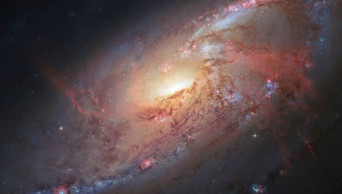Telescope
New space telescope reaches final stop million miles out
The world’s biggest, most powerful space telescope arrived at its observation post 1 million miles from Earth on Monday, a month after it lifted off on a quest to behold the dawn of the universe.
On command, the James Webb Space Telescope fired its rocket thrusters for nearly five minutes to go into orbit around the sun at its designated location, and NASA confirmed the operation went as planned.
The mirrors on the $10 billion observatory still must be meticulously aligned, the infrared detectors sufficiently chilled and the scientific instruments calibrated before observations can begin in June.
Also read: Space telescope launched on daring quest to behold 1st stars
But flight controllers in Baltimore were euphoric after chalking up another success.
“We’re one step closer to uncovering the mysteries of the universe. And I can’t wait to see Webb’s first new views of the universe this summer!” NASA Administrator Bill Nelson said in a statement.
The telescope will enable astronomers to peer back further in time than ever before, all the way back to when the first stars and galaxies were forming 13.7 billion years ago. That’s a mere 100 million years from the Big Bang, when the universe was created.
Besides making stellar observations, Webb will scan the atmospheres of alien worlds for possible signs of life.
Also read: Four station astronauts catch ride with SpaceX back home
3 years ago
Hawaii or Spain? Telescope experts say it may not matter
Honolulu, Aug 26 (AP/UNB) — When starlight from billions of years ago zips across the universe and finally comes into focus on Earth, astronomers want their telescopes to be in the best locations possible to see what's out there.
6 years ago
.jpg)

